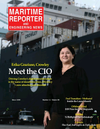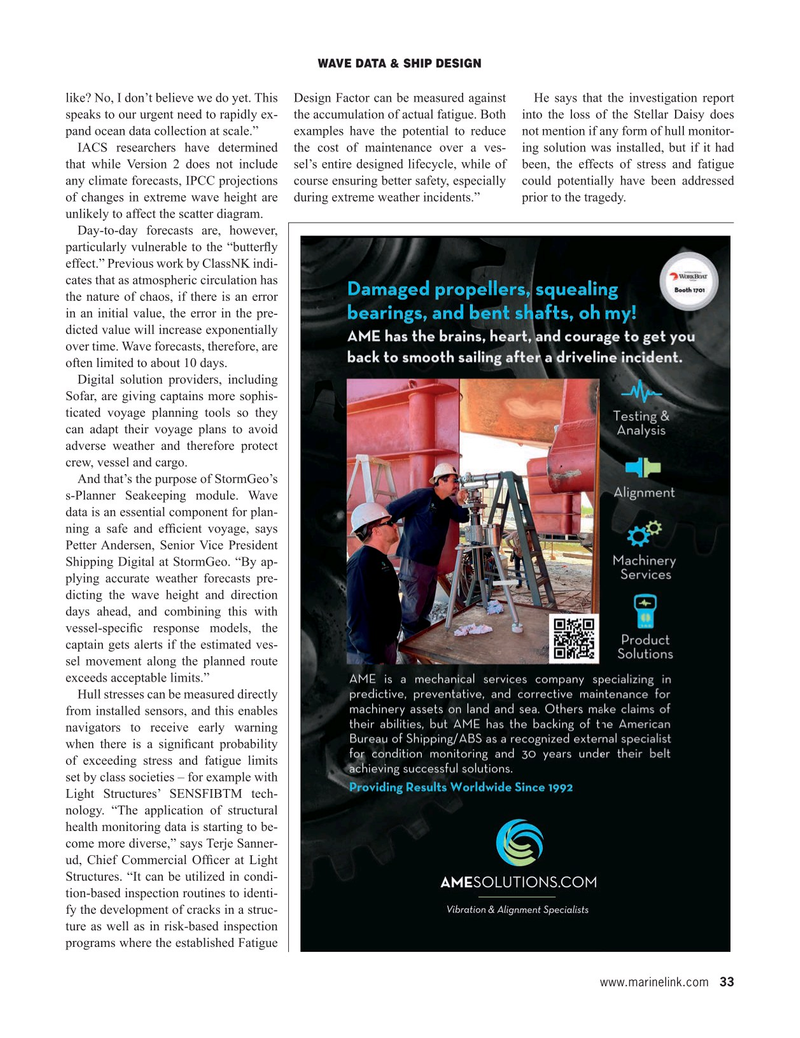
Page 33: of Maritime Reporter Magazine (November 2023)
Workboat Edition
Read this page in Pdf, Flash or Html5 edition of November 2023 Maritime Reporter Magazine
WAVE DATA & SHIP DESIGN like? No, I don’t believe we do yet. This Design Factor can be measured against He says that the investigation report speaks to our urgent need to rapidly ex- the accumulation of actual fatigue. Both into the loss of the Stellar Daisy does pand ocean data collection at scale.” examples have the potential to reduce not mention if any form of hull monitor-
IACS researchers have determined the cost of maintenance over a ves- ing solution was installed, but if it had that while Version 2 does not include sel’s entire designed lifecycle, while of been, the effects of stress and fatigue any climate forecasts, IPCC projections course ensuring better safety, especially could potentially have been addressed of changes in extreme wave height are during extreme weather incidents.” prior to the tragedy.
unlikely to affect the scatter diagram.
Day-to-day forecasts are, however, particularly vulnerable to the “butter? y effect.” Previous work by ClassNK indi- cates that as atmospheric circulation has the nature of chaos, if there is an error in an initial value, the error in the pre- dicted value will increase exponentially over time. Wave forecasts, therefore, are often limited to about 10 days.
Digital solution providers, including
Sofar, are giving captains more sophis- ticated voyage planning tools so they can adapt their voyage plans to avoid adverse weather and therefore protect crew, vessel and cargo.
And that’s the purpose of StormGeo’s s-Planner Seakeeping module. Wave data is an essential component for plan- ning a safe and ef? cient voyage, says
Petter Andersen, Senior Vice President
Shipping Digital at StormGeo. “By ap- plying accurate weather forecasts pre- dicting the wave height and direction days ahead, and combining this with vessel-speci? c response models, the captain gets alerts if the estimated ves- sel movement along the planned route exceeds acceptable limits.”
Hull stresses can be measured directly from installed sensors, and this enables navigators to receive early warning when there is a signi? cant probability of exceeding stress and fatigue limits set by class societies – for example with
Light Structures’ SENSFIBTM tech- nology. “The application of structural health monitoring data is starting to be- come more diverse,” says Terje Sanner- ud, Chief Commercial Of? cer at Light
Structures. “It can be utilized in condi- tion-based inspection routines to identi- fy the development of cracks in a struc- ture as well as in risk-based inspection programs where the established Fatigue www.marinelink.com 33
MR #11 (18-33).indd 33 11/2/2023 9:23:48 AM

 32
32

 34
34
